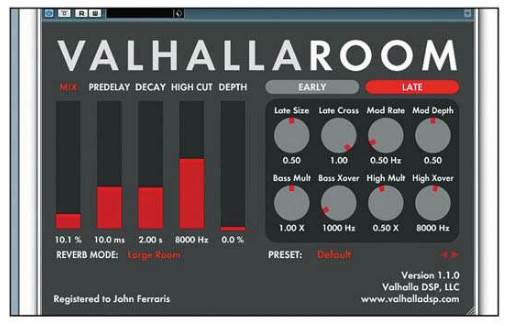Nasty Reese bass with Predator
A stalwart of early noughties drum ‘n’
bass, the Reese has been elevated to near-mythical status as it epitomizes the
perfect marriage of synthesis and heavy processing that modern digital tool and
techniques facilitate. Rob Papen’s Predator is ideal for making a nasty,
abrasive Reese patch while there’s nothing too wild going on under the hood, it
offers enough options to let you really go to town. The use of detuned saw
waves has become something of a cliché among DnB aficionados, but actually this
basic technique provides the foundation for a lot of basses and leads where
that smothering tremolo from beating oscillators is required.
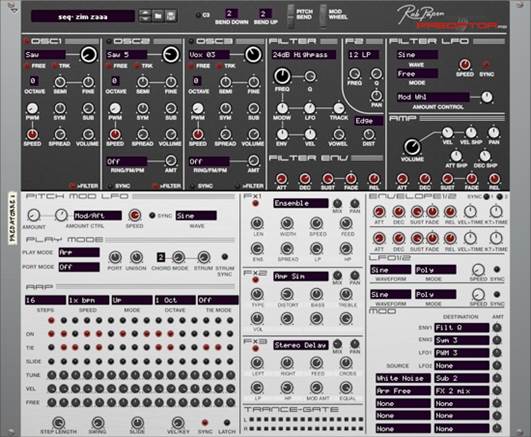
Rob
Papen’s Predator is ideal for making a nasty, abrasive Reese patch – while
there’s nothing too wild going on under the hood, it offers enough options to
let you really go to town
We’ll need to take care when detuning our
oscillators with this technique. If we leave one as it is but detune the other,
say, +50 cents, the resulting pitch will be sharper than the note being hit, so
that patch will sound out of key. If we detune one oscillator by -25 cents and
the other by +25 cents, on the other hand, we get a net detune of 0 cents,
keeping the perceived pitch in line with the triggering note.
Predator’s per-oscillator sub-oscillators
are handy for adding weight without using up a previous oscillator. As Predator
has only three oscillators (two of which are tied up delivering our pulsing
detune), the sub-oscillators provide a convenient means of filling a hole
between our sine sub and the detuned saws. This lets us pitch our saws higher
up, so that they themselves can add that mid-range sizzle. We’ll also use a
notch filter to add some hollow ‘nasalality’ and give our Reese real menace.
Of course, you don’t have to live and die
in the synthesis domain. Once you’ve worked your way through this walkthrough,
start bombarding your sound with effects such as phasers, flangers,
distortions, reverbs and anything else you can think of to push the texture
further and further.
Step by step: Creating a Reese patch in
Predator
- Let’s lay down the groundwork for a
really nasty Reese bass. At the heart of this patch are the tremolo-like
effect of the detuned oscillators and the careful use of distortion to
roughen things up without getting too messy. We’ll be doing some further
distorting outside the synth to add some more growl to the patch.
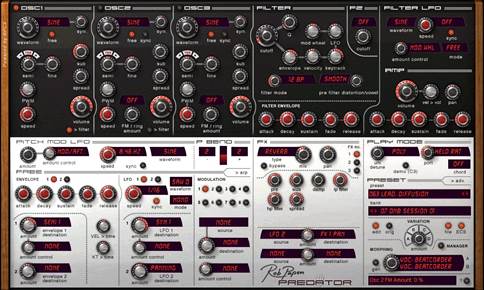
- Drop CM_Pred_Bassline.mid into your project, and in the
patch manager, right-click the current patch and select Default. We
don’t need any amp enveloping or amp velocity for this patch, so turn the Release
of the amp envelope and the Vel>Vol dial all the way down to 0.(Pred2.mp3).
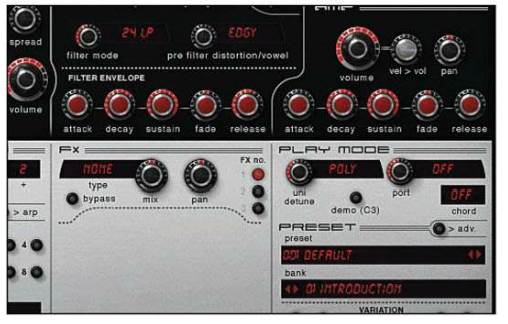
- We’ll make heavy use of Portamento to give the bassline a
lurking, menacing feel. Switch the Play Mode to Legato 2 and
the Portamento to Held Rate so that it only kicks in for
held notes. Now set the Port speed to around 62% (Pred3.mp3).
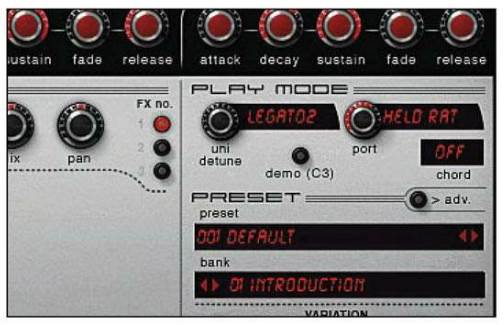
- Switch on the first two oscillators and set their waveforms to Saw.
We don’t want drifting, free-running oscillators, so turn off the Free
buttons – this will give us the tightness and consistency of phase-synced
oscillators. (Pred4.mp3).
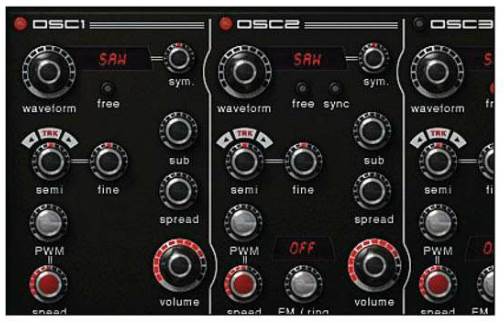
- Pitch both of these oscillators up an octave, then detune the
first one by -25 cents and the second by +25 cents. This
will cause the oscillators to beat heavily against each other, but because
they’re detuned by opposite amounts, the pitches of the notes will remain
consistent. (Pred5.mp3).
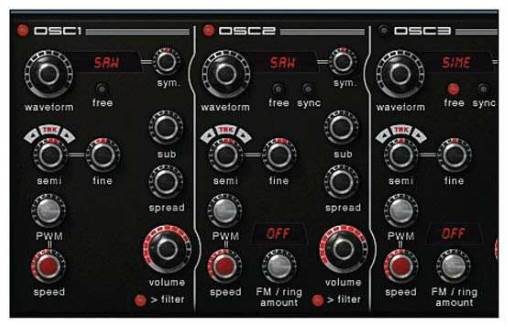
- Turn the sub-oscillators for both Oscillator 1 and Oscillator 2
up to -9dB. This adds a square wave an octave beneath the
oscillators, which is a handy way of bulking out the patch – especially as
we only have one oscillator to spare with this particular synth. (Pred6.mp3).
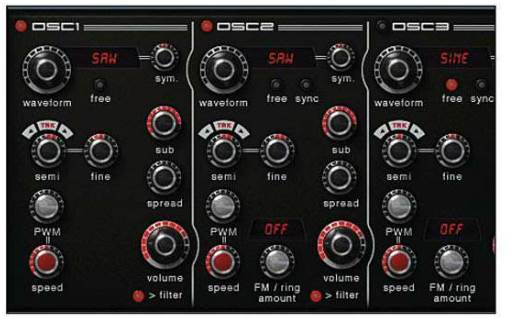
- Turn on Oscillator 3 and switch off the Free
button. Pitch this oscillator down and octave. This provides the clean
sub-bass for this patch, and had we not turned on the sub-oscillators for
1 and 2, we’d the left with a gaping hole in the frequency spectrum
between this oscillator and the first two. (Pred7.mp3).
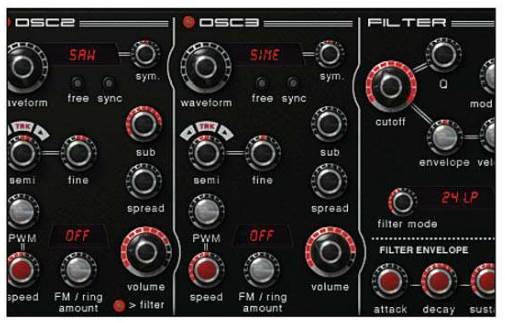
- Change Filter 1 to 12dB Notch and set the Cutoff
to 2.7khz. This gives the sound a nasal feel that’s perfect for our
obnoxious Reese bass. Turn the Keytrack up to +100% so that
the filter cutoff moves up or down in relation to the pitch of the notes
we play.

- Switch on FX 1 and select the Multi Distort effect. Set
the Type to Square and the Mix to 100D/47W.
This blends nearly half of the wet distorted signal in with the dry signal
(parallel distortion), giving a tougher sound without completely devouring
the texture of the patch.
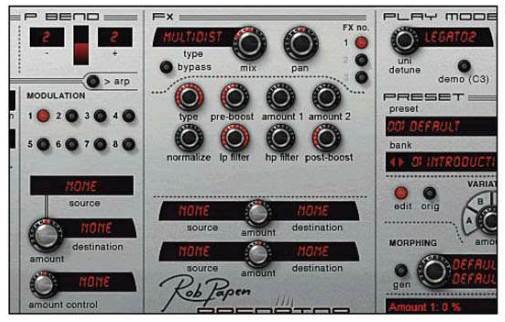
- Turn the Pre-Boost and Amount 1 dials all the way
up for a gritty, growling texture (Pred10.mp3). Now would be a good
time to have a flick through the different distortion modes to see if
there are any others that tickle your fancy. Cross in particular is
less grungy than Square if you want a cleaner sound.
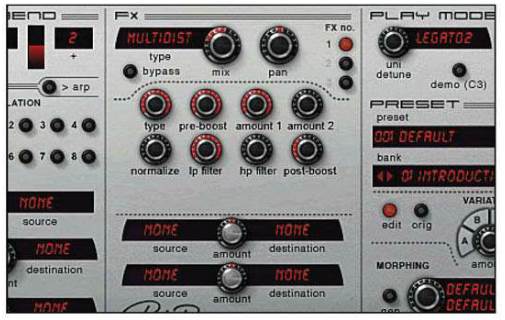
- The low-pass (LP filter) and
high-pass (HP filter) dials are a convenient way of adjusting the
timbre of the distortion. By using them to scoop out certain frequencies,
we can selectively adjust which part of the spectrum will be distorted.
Turn the LP filter to 5.7kHz and the HP filter to 65Hz
for a more mid-range distortion. (Pred11.mp3).
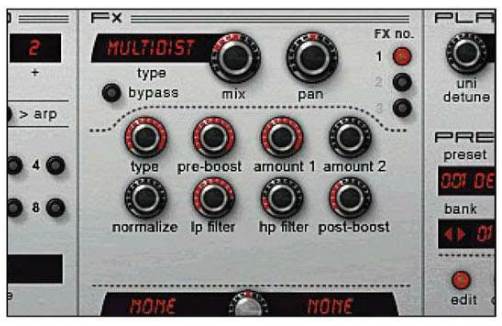
- Turn on FX 2 and select the Phaser
effect. We’ll use this to add a more modern flavor to the patch. Set the Mix
dial to 100D/30W and turn the Feedback all the way down to
eliminate any annoying resonance. (Pred12.mp3).
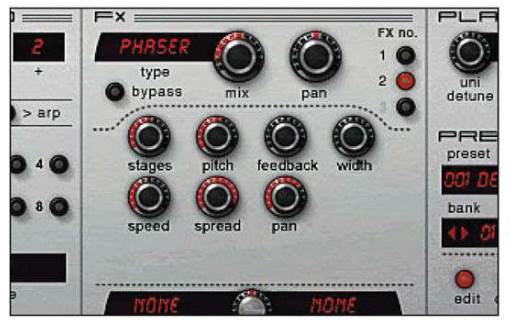
- The Phaser is having the unwanted side
effect of behaving like an autopanner, so turn the Speed dial all
the way down. We’re going to leave the Phaser settings where they are for
now, but experiment with the Stages and Pitch dials to alter
the timbre and intensity of the phasing effect to taste. (Pred13.mp3).
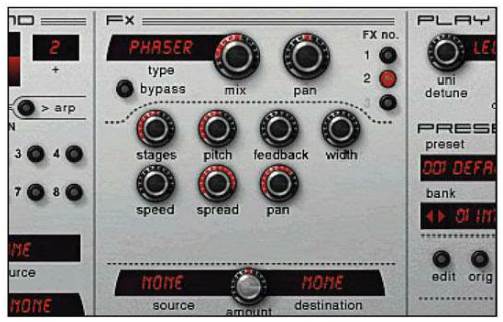
- Now let’s push the patch even further with some processing. We
want to terrorize the patch with some aggressive distortion, so fire up
QuadraFuzz (or an equally devastating distortion plugin) and turn the Gain
up to 10.5dB. To compensate for the massive gain increase, pull the
Output down to around -7.5dB. (Pred14.mp3).
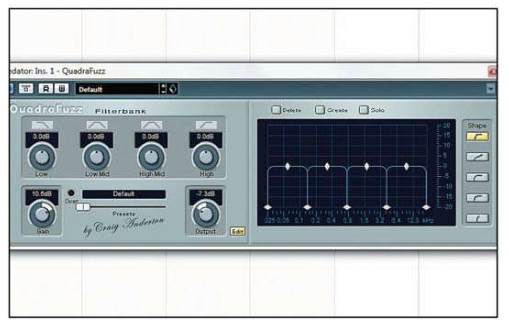
- The different Shape modes affect
how the bands bleed into one another. By default, the bleed is quite clean
and relatively mellow, so select the second one. Turn the High Mid
gain up to about 2.5dB to bring out the nasal midrange of the
patch. (Pred15.mp3)
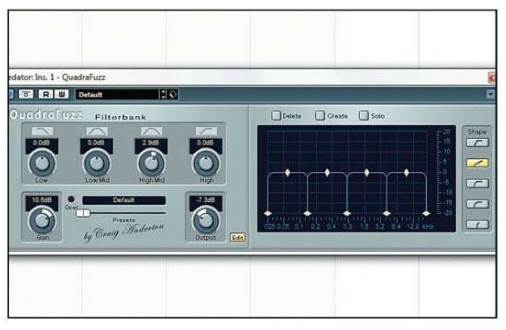
- As a final touch, let’s add some
reverberation. Any reverb will do, but we’re using ValhallaDSP’s
ValhallaRoom. Turn the Mix down to about 10% to keep the
effect subtle and, more importantly, turn the Depth down to 0%.
This allows only the short, tight early reflections through, so we get a
subtle ambience and none of the lengthy tail. (CM_Predator_Result.fxb,
Pred15.mp3).
